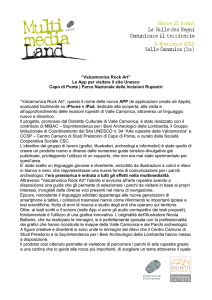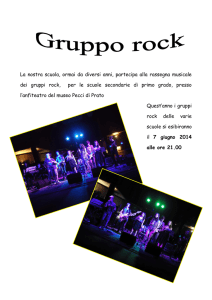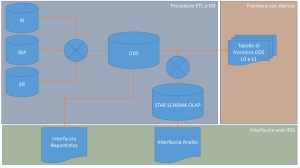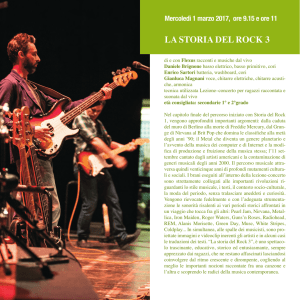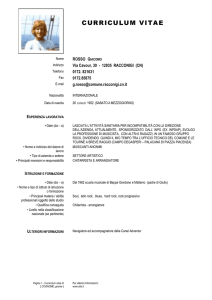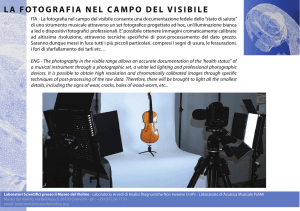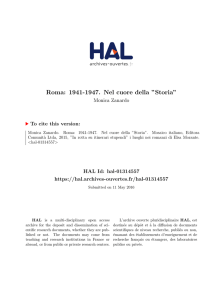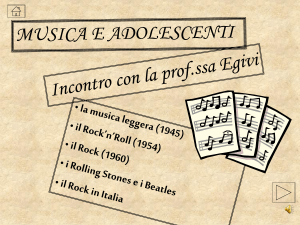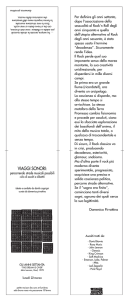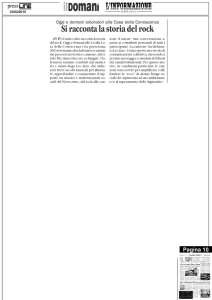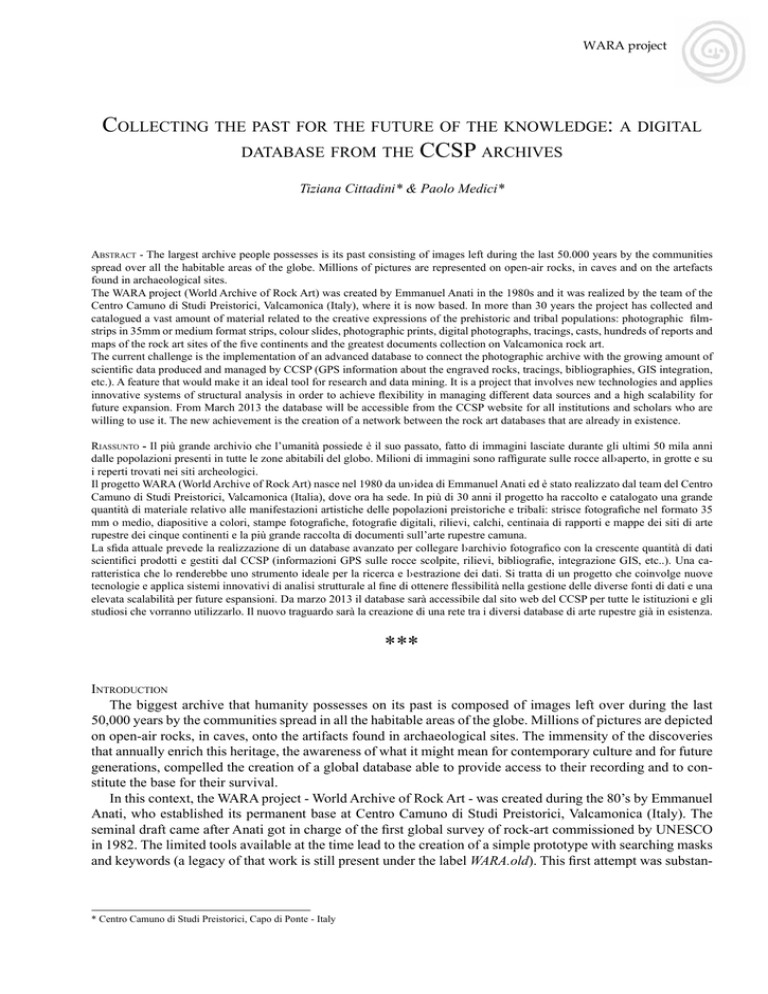
WARA project
Collecting the past for the future of the knowledge: a digital
database from the CCSP archives
Tiziana Cittadini* & Paolo Medici*
Abstract - The largest archive people possesses is its past consisting of images left during the last 50.000 years by the communities
spread over all the habitable areas of the globe. Millions of pictures are represented on open-air rocks, in caves and on the artefacts
found in archaeological sites.
The WARA project (World Archive of Rock Art) was created by Emmanuel Anati in the 1980s and it was realized by the team of the
Centro Camuno di Studi Preistorici, Valcamonica (Italy), where it is now based. In more than 30 years the project has collected and
catalogued a vast amount of material related to the creative expressions of the prehistoric and tribal populations: photographic filmstrips in 35mm or medium format strips, colour slides, photographic prints, digital photographs, tracings, casts, hundreds of reports and
maps of the rock art sites of the five continents and the greatest documents collection on Valcamonica rock art.
The current challenge is the implementation of an advanced database to connect the photographic archive with the growing amount of
scientific data produced and managed by CCSP (GPS information about the engraved rocks, tracings, bibliographies, GIS integration,
etc.). A feature that would make it an ideal tool for research and data mining. It is a project that involves new technologies and applies
innovative systems of structural analysis in order to achieve flexibility in managing different data sources and a high scalability for
future expansion. From March 2013 the database will be accessible from the CCSP website for all institutions and scholars who are
willing to use it. The new achievement is the creation of a network between the rock art databases that are already in existence.
Riassunto - Il più grande archivio che l’umanità possiede è il suo passato, fatto di immagini lasciate durante gli ultimi 50 mila anni
dalle popolazioni presenti in tutte le zone abitabili del globo. Milioni di immagini sono raffigurate sulle rocce all›aperto, in grotte e su
i reperti trovati nei siti archeologici.
Il progetto WARA (World Archive of Rock Art) nasce nel 1980 da un›idea di Emmanuel Anati ed è stato realizzato dal team del Centro
Camuno di Studi Preistorici, Valcamonica (Italia), dove ora ha sede. In più di 30 anni il progetto ha raccolto e catalogato una grande
quantità di materiale relativo alle manifestazioni artistiche delle popolazioni preistoriche e tribali: strisce fotografiche nel formato 35
mm o medio, diapositive a colori, stampe fotografiche, fotografie digitali, rilievi, calchi, centinaia di rapporti e mappe dei siti di arte
rupestre dei cinque continenti e la più grande raccolta di documenti sull’arte rupestre camuna.
La sfida attuale prevede la realizzazione di un database avanzato per collegare l›archivio fotografico con la crescente quantità di dati
scientifici prodotti e gestiti dal CCSP (informazioni GPS sulle rocce scolpite, rilievi, bibliografie, integrazione GIS, etc..). Una caratteristica che lo renderebbe uno strumento ideale per la ricerca e l›estrazione dei dati. Si tratta di un progetto che coinvolge nuove
tecnologie e applica sistemi innovativi di analisi strutturale al fine di ottenere flessibilità nella gestione delle diverse fonti di dati e una
elevata scalabilità per future espansioni. Da marzo 2013 il database sarà accessibile dal sito web del CCSP per tutte le istituzioni e gli
studiosi che vorranno utilizzarlo. Il nuovo traguardo sarà la creazione di una rete tra i diversi database di arte rupestre già in esistenza.
***
Introduction
The biggest archive that humanity possesses on its past is composed of images left over during the last
50,000 years by the communities spread in all the habitable areas of the globe. Millions of pictures are depicted
on open-air rocks, in caves, onto the artifacts found in archaeological sites. The immensity of the discoveries
that annually enrich this heritage, the awareness of what it might mean for contemporary culture and for future
generations, compelled the creation of a global database able to provide access to their recording and to constitute the base for their survival.
In this context, the WARA project - World Archive of Rock Art - was created during the 80’s by Emmanuel
Anati, who established its permanent base at Centro Camuno di Studi Preistorici, Valcamonica (Italy). The
seminal draft came after Anati got in charge of the first global survey of rock-art commissioned by UNESCO
in 1982. The limited tools available at the time lead to the creation of a simple prototype with searching masks
and keywords (a legacy of that work is still present under the label WARA.old). This first attempt was substan-
* Centro Camuno di Studi Preistorici, Capo di Ponte - Italy
Tiziana Cittadini & Paolo Medici
tially a photo gallery, where each photo was accompanied by a specific data sheet. This effort showed that the
huge amount of data to be catalogued needed a careful normalization to avoid dangerous redundancies. This
early experience formed the basis for the planning of a new database, called WARA.pro.
In more than 40 years the project has gathered a vast documentation on the creative manifestations of
prehistoric and tribal populations: photographic film-strips in 35mm or medium format (mostly B/W), color
slides, photographic prints, digital photographs (from 2003), tracings, rubbings, casts, hundreds of reports
and maps of the rock art sites in five continents. To limit the damage caused by decay of materials through
time the complete digitization in high resolution and a re-organization into a modern database was started
in 2004. Until now the CCSP has digitized 20 % of the photographic documents existing in the archive. The
vast amount of rock-art recording preserved at CCSP is already considered one of the largest and most comprehensive worldwide resources in the field of rock art: a solid basis for research, documentation, preservation
and for analytical, comparative, educational and cultural studies. In addition to historians, archaeologists,
anthropologists, sociologists these documents affect graphic designers, educators, psychologists, organizers of
exhibitions and museums, publishers, municipalities and government agencies.
The next big challenge is now the implementation of a database able to inter-connect the photographic
archive with other scientific information produced and managed by CCSP (GPS information about the carved
rocks, tracings, bibliographies, park details, scientific articles, monographs, etc.). It is a project that involves
new technologies and applies innovative systems of structural analysis in order to achieve flexibility and efficiency in managing different data sources. Furthermore, from March 2013 inserted data will be easily accessible from CCSP website to a growing number of institutions and specialists who want to use it.
Aims
The project involves the digitization of thousand of rock-art recording in order to:
● Save and safeguard the cultural heritage collected over 50 years throughout the world and, specifically, in
Valcamonica;
● Exploit and ensure the accessibility and active use of this scientific heritage through the use of new technologies;
● To reach these aims we had predisposed a list of features that has been choice in the basis of the material
present in our archives, and meetings with scholars of several disciplines such as archaeology, informatics and
researchers of the rock art;
● Being an integrated system that is able to host different kind of information (photos, texts, book references,
GPS coordinates, and cartographic data). These information have to be gathered in “sheets” linkable among
them in a hierarchy;
● The possibility to cross check the data, and to interact with the different kind of information contained in
the sheets;
● The data inserted have to be linkable to the GPS coordinates, in order to have the possibility to be included
in a GIS software;
● The software must have a specific access from internet for some of the information with a system of validation for different kind of users (researchers, university, tourists, etc.) and with different roles (visitor, editor,
administrator).
Structure and goals
In the 2003 the assignment of the realization of this software was assigned to the company Electronic
Center. They have programmed the software step by step with the CCSP staff in order to overcome the several issues encountered. Furthermore they furnished the IT service during the implementation of the data with
updating and the adjustment of the bugs found.
The WARA.pro multilingual (Italian/English) database is based on the hierarchical structure existing
between the various “objects of study” or ODS (photos à engraved rock à site à park, etc.). In a parent-child
hierarchy the ODS child inherits all the features of the ODS parent. The flexibility of the structure allows the
administrator to extend and adapt over time records pertaining to individual ODS and to review their relations
hierarchy. Each ODS can be connected to each other through a 1 to 1 relationship (one to many and many to
many). Queries can then be made both on the characteristics of the single ODS or those of the parent object.
Example:
The photograph of the so-called “Don Quixote” of Foppe di Nadro. The ODS-document referring to the
Collecting the past for the future of the knowledge: a digital database
from the CCSP archives
photograph has a specific data sheet (date, name of photographer, original archive, place of the original media, aesthetic evaluation, conservation/decay issues, description of the depicted subject, keywords, etc.). The
ODS-document is “child” of the ODS-object (data sheet of the engraved rock with name, date and author of
discovery, chronological attribution, type of support, carving technique, location, description, bibliography
downloadable in pdf, keywords), of the ODS-site (data sheet with geographical information), of the ODS-archaeological park (only if the rock is part of a protected area). Hierarchies can be freely changed by the system
administrator. For example: if the area of Foppe di Nadro were to pass by the Natural Reserve to the Naquane
Park it would be necessary only to modify the parent-child hierarchy, and all the rocks - with their documents
(photos, tracings, etc.) - would migrate automatically to the Naquane park without the need of further manual
changes.
The database has been structured keeping in mind the hierarchy between classes of “objects”, which in our
case can be many. The flexible structure allows the system administrator to extend and adapt over time the
objects populating the database with the addition of new classes and new links between them.
1. The main structure of WARA.pro DB.
Analysis of the state of archives
The historical photo archive
A set of photographs (negatives in B/W taken from 1956 to 1988) has been recognized as a collection of
historical importance. They are physically catalogued in chronological order of entry, divided by year and
following an alphanumeric sequence.
● Access conditions: contact sheets in chronological order, assembled together according to geographical area.
● Issues: Besides the obvious problems of conservation, the photographic material of the historical archive
requires a substantial logistic reorganization. During the first few Anati’s missions much of the photographs collected during the surveys have not undergone a systematic cataloguing. Furthermore the archive has never been
readjusted to the new names of the engraved areas and to the organization in sub-areas of more recent introduction. Without a full scan and a complete catalogue important reports of the ‘50s and ‘60s, unique evidences of
“lost” rocks as well as of the evolution of Valcamonica landscape during the XX century would be lost.
The contemporary photo archive
Between the ‘70s and the ‘90s the main photographic media were 35mm color slides. They have two forms
of cataloguing:
- before 1988: there is no alphanumeric ID, the slides are simply arranged following a geographical classification.
- after 1988: catalogue in chronological order of entry, divided by year and following an alphanumeric sequence. Each slide carries a note about the original geographic location and the author of the photograph (not
always reported).
● Access conditions: prints ordered according to geographical classification.
● Issues: some slides are missing or severely damaged (discoloration, scratches, dust, etc.). To limit the decay
process it is necessary to quickly scan everything in high resolution.
State of the digitization process
Total negatives counted
125100
Total negative scanned
8555
Tiziana Cittadini & Paolo Medici
The tracings archive
During fieldworks conducted in rock-art sites (Italy and abroad) have been produced and collected 5635
tracing, of which 2135 filed by CCSP (catalogue by S. Ventura produced in 1997 – to be rechecked) and 3500
by the Department Valcamonica and Lombardy (located in Niardo).
● Access conditions: the tracing archive is in difficult conditions of consultability due both the inadequate
space and the lack of a systematic catalogue. The situation has been worsened by three successive relocation.
● Issues: The only attempt at a catalogue dates back to 1995-1997. It started from an attempt to digitization
which, unfortunately, is today completely useless due to the inadequate tools used at the time. Future digitization and cataloging will need to take into account the heterogeneity of the media (nylon, transparencies, RADEX, etc.), as well as the state of degradation of many nylon tracings.
Mapping and georeferencing
The GPS georeferencing of Valcamonica engraved rocks is part of the overall project involving the mapping of rock-art and of historical paths of Valcamonica.
Other research materials that does not have yet a place into the main database:
● Archaeological missions (Har Karkom, etc.).
● Cultural events (conferences, lectures, fieldworks, training courses, etc.).
● Shows and exhibitions (40,000 years of contemporary art, etc.).
● Unpublished articles, reports and manuscripts;
The database: technical overview
WARA.NET
The WARA.net application provides two 2 ways of access: a Windows management by operators of CCSP
and one by web for consultation. In both of ways , the display and input can be done in Italian and English
MANAGEMENT WINDOWS APPLICATION
The Windows application allows you to manage the structure of the “oggetti di studio” (“objects of study”
or ODS) and all its dependencies that allow you to manage:
● Attributes and kind of attribute
● Models based on the type ODS
● Hierarchy of ODS
● Images and documents
● Basic and Advanced Search
● Management Keywords
● Enable the publication of ODS and their properties via web
Requirements:
● Net Framework 4.0
● Crystal Reports for. Net
● MS SQL Server 2008 R2
Web interface for research and publication of ODS
The web interface provides access to the Italian or English portal and sign indicating email, username and
password. In this way, CCSP operators will later assign the role of access and visibility of ODS.
The web archive displays only the properties of each ODS and ODS that operators of CCSP enable the
external vision.
The main functionalities for web search are:
● User registration
● Navigation hierarchy
● Basic search
● Request for information in context
● Search by model
● Tracking and access statistics
● Detail tab
Requirements:
● Net Framework 4.0
● ASP.NET MVC3
● MS SQL Server 2008 R2

